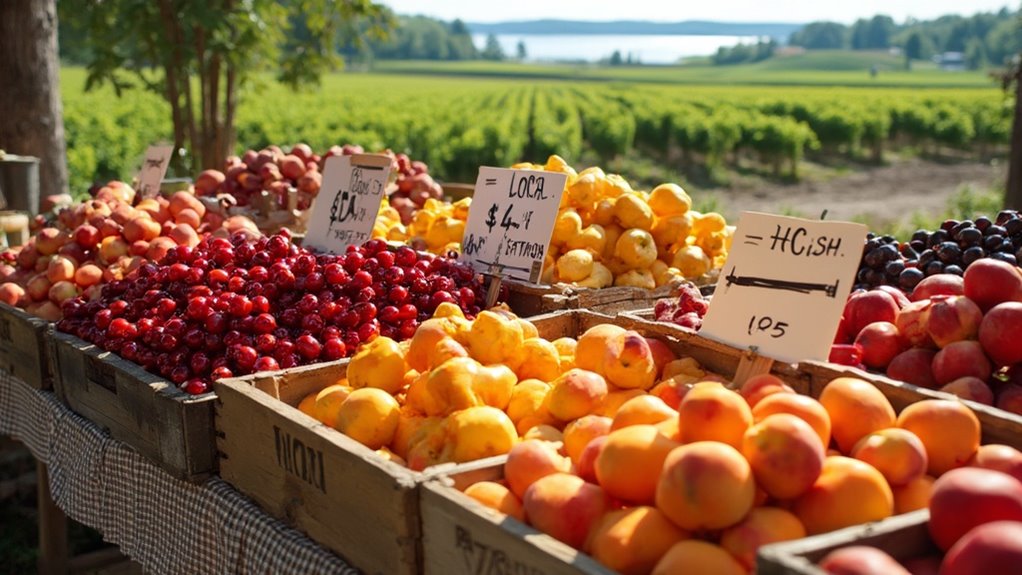Numerous fruit farmers in the Niagara Region are celebrating record sales as local produce gains popularity with Ontario shoppers. Recent tariff policies have made imported fruits more expensive, pushing consumers toward locally grown options. This shift has boosted revenues for Niagara’s fruit producers, who’ve seen a 21% increase in gross farm revenue between 2016 and 2021.
Niagara fruit farmers reap benefits as Ontario shoppers embrace local produce amid rising import costs.
The region’s unique geography plays a key role in its success. Niagara contributes 90% of Ontario’s grape production and accounts for 80% of Canada’s wine production. It’s also home to over two-thirds of Ontario’s tender fruit orchards, including peaches, cherries, and plums. The area’s sandy loam soils and climate-moderating effects from nearby lakes create ideal growing conditions.
Local shoppers now regularly choose Niagara fruits over imports. In 2022, Ontario fruit sales benefited from a 12.2% production increase, with apple production jumping by 29%. Lincoln Municipality, a key growing area, saw farm receipts rise by 33% between 2011 and 2016.
The agricultural impact on Niagara’s economy is substantial. The sector contributed $1.71 billion to regional GDP in 2021. Fruit farming ranks as the third-largest agricultural sector in the region, valued at $139.98 million in 2016. Tender fruit production alone returns approximately $100 million annually to the local economy.
Consumers cite multiple reasons for buying local. Freshness, environmental concerns, and supporting local farmers top the list. Direct sales through farmers’ markets and roadside stands continue to grow. Public awareness campaigns promoting Canadian agriculture have also influenced buying patterns.
Despite the success, challenges remain. Labor shortages and high production costs make it difficult to scale operations. Weather events like unexpected frosts can damage crops and affect yields. The Ontario Apple Growers organization provides crucial industry leadership and price negotiation support for the region’s 700 apple growers.
Nevertheless, Niagara farmers continue to adapt with high-density planting and advanced irrigation practices. The combination of tariff policies, geographic advantages, and consumer preferences has created favorable conditions for Niagara’s fruit sector, positioning it for continued growth in coming years.
Niagara’s fruit industry continues to evolve in the face of shifting conditions and rising expectations. Adaptability and innovation remain at the core of its progress. Learn more about the people and practices shaping agriculture in the region at Marketplace Niagara.









